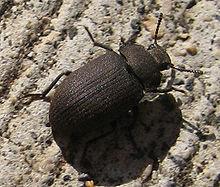
Endomychidae, or handsome fungus beetles, is a family of beetles with representatives found in all biogeographic realms. There are around 120 genera and 1300 species. The family was established based on the type genus Endomychus, a genus erected in 1795 by Panzer which was applied to a species that Linnaeus called Chrysomela coccinea. As the common name suggests, Endomychidae feed on fungi. Crowson, in his influential treatment of the beetles, placed the family within the Cucujoidea. They have a tarsal formal of 4-4-4 or 3-3-3 and the wings lack a closed radial cell. The second antennal segment has a sensory appendage that is as long as the third antennal segment. The family has also been grouped with the Coccinellidae in a group called the Trimera for having pseudotrimerous tarsi. A 2015 molecular phylogeny study found that the Cucujoidea were found to be non-monophyletic and the Endomychidae was refined with the removal of the Anamorphinae from within the family and elevated to the status of a full family, Anamorphidae. Mycetaeinae and Eupsilobiinae were also found not to belong within the clades of the core Endomychidae, and likewise reclassified into the families Mycetaeidae and Eupsilobiidae.

Brachinus is a genus of ground beetle native to the Nearctic, Palearctic, the Near East and North Africa. Beetles in this genus are commonly referred to as bombardier beetles. The genus contains the following species:

Stenolophus is a genus of beetles in the family Carabidae. There are more than 190 described species in the genus Stenolophus.
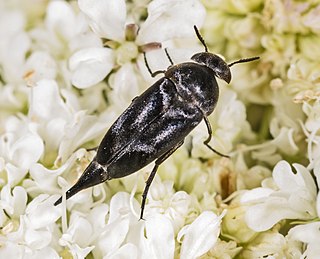
Mordella is the type genus of the tumbling flower beetle family (Mordellidae), its subfamily Mordellinae and the tribe Mordellini. It is widely distributed in the Holarctic and adjacent regions. The larvae are primarily dead wood borers.

Mylabris is a genus of beetles in the family Meloidae. It is endemic to the Palearctic realm. The species-rich genus Hycleus was historically confused with Mylabris and have their greatest diversity in the Afrotropics.

Ocypus is a genus of rove beetles in the subfamily Staphylininae.

Epicauta is a genus of beetles in the blister beetle family, Meloidae. The genus was first scientifically described in 1834 by Pierre François Marie Auguste Dejean. Epicauta is distributed nearly worldwide, with species native to all continents except Australia and Antarctica. Surveys have found the genus to be particularly diverse in northern Arizona in the United States. Few species occur in the Arctic, with none farther north than the southern edge of the Northwest Territories, Canada.
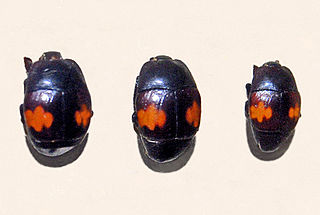
Saprinus is a genus of clown beetles belonging to the family Histeridae. There are more than 200 described species in Saprinus. They are found on every continent except Antarctica.
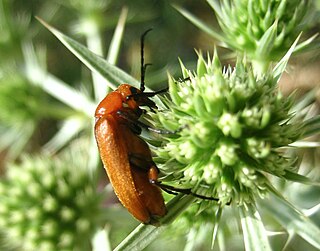
Zonitis is a genus of blister beetles in the family Meloidae. The genus was named and described by Johan Christian Fabricius in 1775.

Macrosiagon is a genus of wedge-shaped beetles in the family Ripiphoridae. There are more than 20 described species in Macrosiagon. Under the rules of the ICZN, the nomenclatural gender of the genus name is feminine, as it is based on the Greek word "siagon" (σῐᾱγών), for "jaw", which is feminine in gender, despite recent publications erroneously treating the gender as neuter

Pimeliini is a tribe of darkling beetles in the subfamily Pimeliinae of the family Tenebrionidae. There are more than 60 genera in Pimeliini, found primarily in the Palearctic.

Stenosini is a tribe of darkling beetles in the subfamily Pimeliinae of the family Tenebrionidae. There are more than 40 genera in Stenosini.

Tentyriini is a tribe of darkling beetles in the subfamily Pimeliinae of the family Tenebrionidae. There are more than 90 genera in Tentyriini.
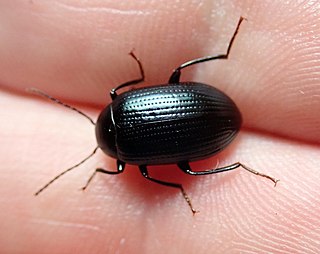
Amarygmini is a tribe of darkling beetles in the family Tenebrionidae. There are more than 80 genera in Amarygmini.




